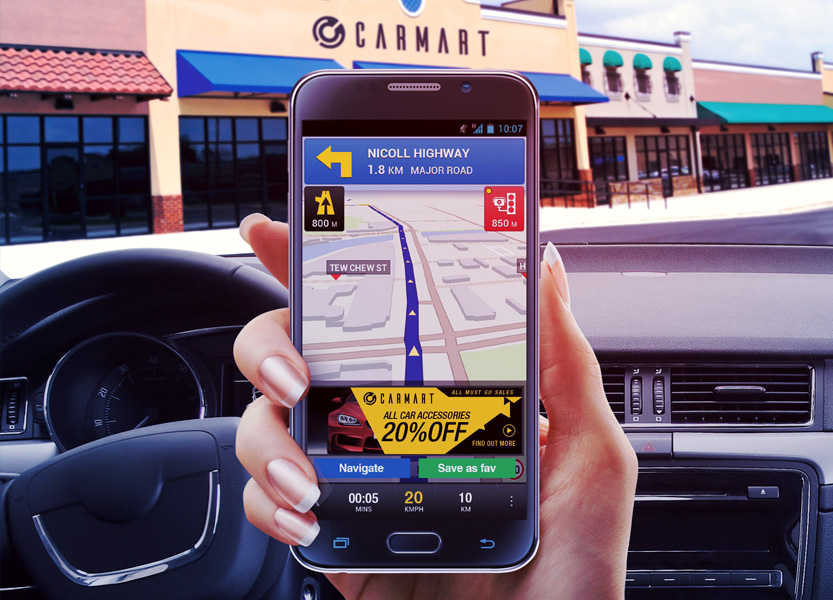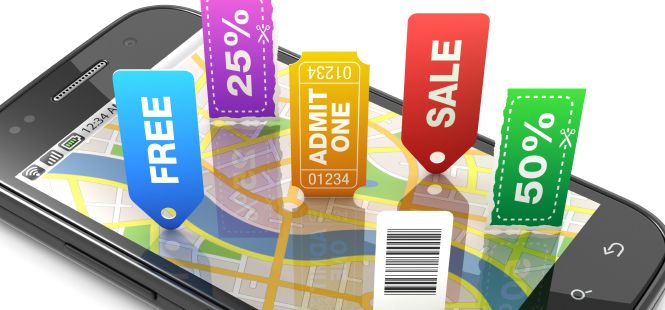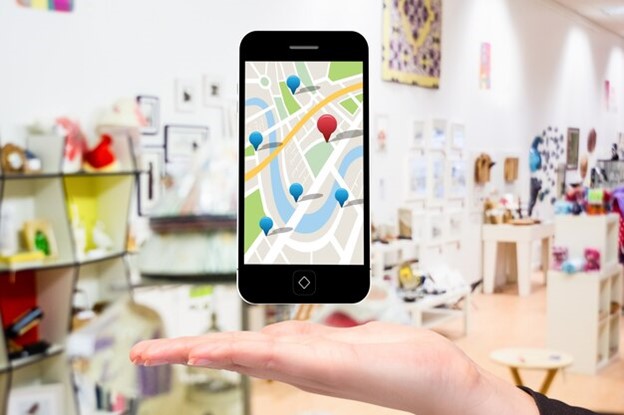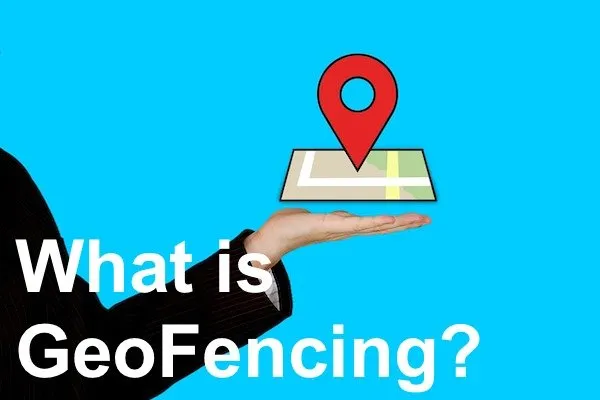Mobile Location Advertising
Tapping into the power of mobile advertising has become essential for businesses looking to reach and engage with their target audience in today’s digital age.
With the increasing use of smartphones and the ever-growing reliance on location data, mobile location advertising has emerged as a game-changer in the marketing world.

What is Mobile Location Advertising?
Mobile location advertising refers to the practice of delivering personalized and relevant ads to consumers based on their current or past geographic locations. It harnesses the potential of GPS technology to target users with ads that are specific to their location.
By understanding where users are and delivering ads at the right time and place, businesses can significantly increase the chances of driving conversions and improving ROI.
The rise of mobile advertising has transformed the way businesses connect with their audience. According to a report by eMarketer, mobile ad spending is projected to reach $240 billion by 2022, surpassing all other forms of advertising. This shift in advertising spend is driven by the increasing use of smartphones, as people spend more time on their mobile devices compared to other mediums.
Benefits of Mobile Location Advertising
Mobile location advertising offers numerous benefits for businesses and marketers. First and foremost, it allows for hyper-targeted advertising. By leveraging location data, businesses can deliver ads to users who are in close proximity to their physical stores or who have previously visited their locations. This level of targeting ensures that ads reach the right audience at the right time, increasing the likelihood of conversions.
In addition to hyper-targeting, mobile location advertising also enables businesses to provide personalized experiences to their customers. By understanding a user’s location, businesses can tailor their ads to be more relevant and engaging. For example, a restaurant can promote a special offer to users who are nearby during lunchtime, increasing the chances of attracting customers.
Another benefit of mobile location advertising is its cost-effectiveness. Compared to traditional forms of advertising, such as TV or print, mobile ads can be more affordable and have a higher return on investment. Businesses can optimize their ad spend by targeting specific locations and demographics, ensuring that they are reaching the right audience without wasting resources.

Mobile Location Advertising Statistics
To further emphasize the importance and effectiveness of mobile location advertising, let’s take a look at some statistics:
- 80% of smartphone users are more likely to make a purchase from companies that offer personalized experiences based on their location.
- 70% of consumers are more likely to visit a store if they receive location-based push notifications.
- 92% of marketers believe that location data is important or critical to their business strategies.
- Mobile ads that include location-based elements see a 10% increase in click-through rates compared to non-location-based ads.
These statistics highlight the significant impact that mobile location advertising can have on driving engagement and conversions for businesses.

How does Mobile Location Advertising Work?
Mobile location advertising relies on a combination of GPS technology and user data to deliver targeted ads. When users grant permission for apps to access their location, their mobile devices constantly collect location data, which can then be used to serve relevant ads.
There are two primary methods for delivering mobile location ads: geofencing and beacons. Geofencing involves setting up virtual boundaries around specific locations, such as a store or event venue. When a user enters or exits these boundaries, they can be targeted with relevant ads. Beacons, on the other hand, are physical devices that use Bluetooth technology to detect nearby mobile devices. By placing beacons in strategic locations, businesses can deliver highly targeted ads to users in close proximity.
To ensure that mobile location advertising is effective, it is crucial to have accurate and up-to-date location data. This can be achieved through partnerships with location data providers or by leveraging mobile app networks that have access to a vast amount of location data.

Strategies for Effective Mobile Location Advertising
To make the most of mobile location advertising, businesses and marketers need to develop effective strategies. Here are some key strategies to consider:
1. Understand Your Target Audience
Before implementing mobile location advertising, it is essential to have a deep understanding of your target audience. This includes their demographics, interests, and behaviors. By knowing who your audience is, you can create more relevant and personalized ads that resonate with them.
2. Set Clear Goals
Define clear goals for your mobile location advertising campaigns. Whether it is increasing foot traffic to your store, driving online sales, or raising brand awareness, having specific objectives will help guide your ad creative and targeting strategies.
3. Create Compelling Ad Creative
The success of your mobile location advertising campaigns heavily relies on the quality of your ad creative. Make sure to create compelling and visually appealing ads that grab attention and encourage users to take action. Use eye-catching images, concise and persuasive copy, and a strong call-to-action.
4. Optimize for Mobile
Given that mobile location advertising is primarily aimed at mobile users, it is crucial to optimize your ads for mobile devices. Ensure that your ads are responsive and load quickly on different screen sizes. Also, consider the mobile user experience when designing your landing pages to ensure a seamless transition from the ad to your website or app.
5. Test and Iterate
Like any marketing strategy, mobile location advertising requires constant testing and iteration. Monitor the performance of your ads, track key metrics such as click-through rates and conversions, and make adjustments accordingly. Experiment with different ad formats, targeting options, and messaging to find what works best for your business.

Targeting Options for Mobile Location Advertising
Mobile location advertising offers various targeting options to reach your desired audience. Here are some key targeting options to consider:
1. Geotargeting
Geotargeting allows businesses to deliver ads to users based on their current location. This can be particularly useful for promoting local events, sales, or store openings. By selecting specific geographic areas, businesses can ensure that their ads are seen by users who are most likely to visit their locations.
2. Geofencing
Geofencing involves setting up virtual boundaries around specific locations. When a user enters or exits these boundaries, they can be targeted with relevant ads. Geofencing is especially effective for driving foot traffic to stores or engaging with consumers in specific areas, such as shopping malls or event venues.
3. Contextual Targeting
Contextual targeting involves delivering ads based on the content or context of a user’s mobile activity. For example, if a user is browsing for restaurants, ads for nearby eateries can be displayed. Contextual targeting ensures that ads are relevant and timely, increasing the chances of engagement.
4. Behavioral Targeting
Behavioral targeting involves delivering ads based on a user’s past behavior. By analyzing a user’s browsing history, app usage, or purchase behavior, businesses can target users with ads that align with their interests and preferences. Behavioral targeting helps businesses deliver more personalized and relevant ads, improving engagement and conversions.

Best Practices for Mobile Location Advertising Campaigns
To maximize the effectiveness of your mobile location advertising campaigns, here are some best practices to follow:
1. Respect User Privacy
User privacy is of utmost importance when it comes to mobile location advertising. Always obtain proper consent from users before collecting their location data. Be transparent about how the data will be used and provide clear opt-out options.
2. Ensure Relevance and Personalization
Deliver ads that are relevant and personalized to the user’s location and interests. Tailor your ad creative and messaging to resonate with your target audience. Avoid sending generic ads that may not be meaningful to users.
3. Monitor and Optimize
Regularly monitor the performance of your mobile location advertising campaigns. Track key metrics, such as click-through rates, conversions, and return on ad spend. Use this data to identify areas for improvement and optimize your campaigns accordingly.
4. Test Different Strategies
Experiment with different targeting options, ad formats, and messaging to find what works best for your business. Test different geofences, creative variations, and targeting parameters to identify the most effective combinations.
Tools and Technologies for Mobile Location Advertising
To implement mobile location advertising effectively, businesses can utilize various tools and technologies. Here are some popular options:
1. Mobile Advertising Platforms
Mobile advertising platforms, such as Google Ads and Facebook Ads, offer robust targeting options and ad formats specifically designed for mobile devices. These platforms provide powerful tools for creating, managing, and optimizing mobile location advertising campaigns.
2. Location Data Providers
Location data providers, such as Foursquare and PlaceIQ, offer valuable location insights and data that can be used to enhance mobile location advertising campaigns. These providers offer access to accurate and up-to-date location data, enabling businesses to target users with precision.
3. Mobile Analytics Tools
Mobile analytics tools, such as Google Analytics for Mobile Apps and Mixpanel, provide valuable insights into user behavior and engagement. These tools help businesses track the performance of their mobile location advertising campaigns and make data-driven decisions.

Conclusion
Mobile location advertising has revolutionized the way businesses connect with their audience. By leveraging the power of location data and GPS technology, businesses can deliver personalized and relevant ads to users at the right time and place. This hyper-targeted approach significantly increases the chances of driving conversions and improving ROI.
In this article, we explored the ins and outs of mobile location advertising, uncovering its benefits, challenges, and best practices. We discussed the rise of mobile advertising, the benefits of mobile location advertising, and the strategies and targeting options for effective campaigns. We also highlighted the importance of user privacy, monitoring and optimization, and the tools and technologies available for mobile location advertising.
As mobile usage continues to grow, businesses and marketers need to embrace mobile location advertising as a key component of their marketing strategies. By harnessing the power of location-based targeting technologies, businesses can supercharge their mobile advertising game and connect with their target audience in a more meaningful and effective way. So, get ready to take your mobile advertising efforts to the next level with the power of mobile location advertising.


